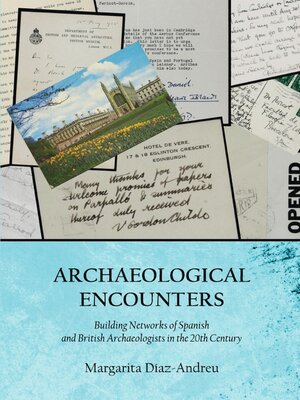Archaeological Encounters
ebook ∣ Building Networks of Spanish and British Archaeologists in the 20th Century
By Margarita Díaz-Andreu

Sign up to save your library
With an OverDrive account, you can save your favorite libraries for at-a-glance information about availability. Find out more about OverDrive accounts.
Find this title in Libby, the library reading app by OverDrive.



Search for a digital library with this title
Title found at these libraries:
| Library Name | Distance |
|---|---|
| Loading... |
This book examines the relationship between British and Spanish archaeology in the light of international geographies of knowledge. It looks at the practical aspects of the personal relationships established between British and Spanish prehistoric archaeologists from the 1920s to the 1970s. Part I of the book sets the scene. It provides some contextual information on the main events in the archaeology of both countries in the period under study. It also introduces Professor Luis Pericot, the archaeologist whose archive serves as the basis for much of what is discussed throughout the following chapters. In Part II of the book an analysis of the correspondence held in the Pericot Archive (the Fons Pericot in the Biblioteca de Catalunya) is undertaken. The examination of the letters exchanged between Spanish and British prehistorians in general, and in particular between Luis Pericot and about a dozen major British scholars of his time, allows the reconstruction of the nature of the relationships formed between them. The analysis has been divided into three chapters, corresponding to the three main towns where his correspondents lived for most of their academic careers: London, Cambridge and Oxford. In Part III of the book the information obtained from the correspondence is then complemented and re-examined, considering three main aspects: the production, transmission and reception of knowledge. This analysis puts together aspects discussed in Part I of the book with the data gathered from the letters in Part II, as well as other information provided by publications including translations and reviews. First of all an assessment is made as to whether the geographical context affected the way knowledge of prehistoric archaeology was produced. Secondly, the mechanisms and networks that allowed the international transmission of both ideas and practices linked to prehistoric archaeology are assessed. A third aspect looked into is the reception of knowledge, linking this with issues such as academic prestige and authority.







